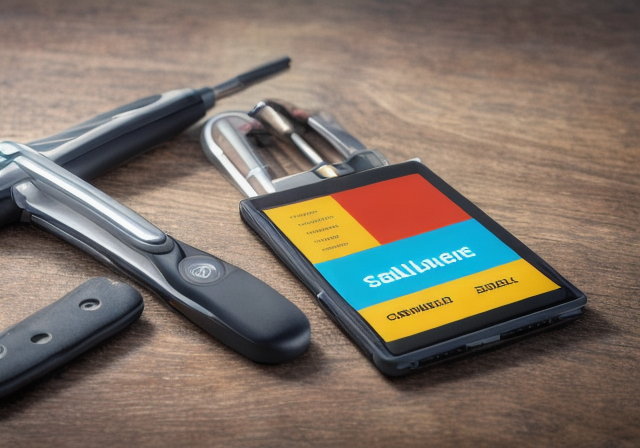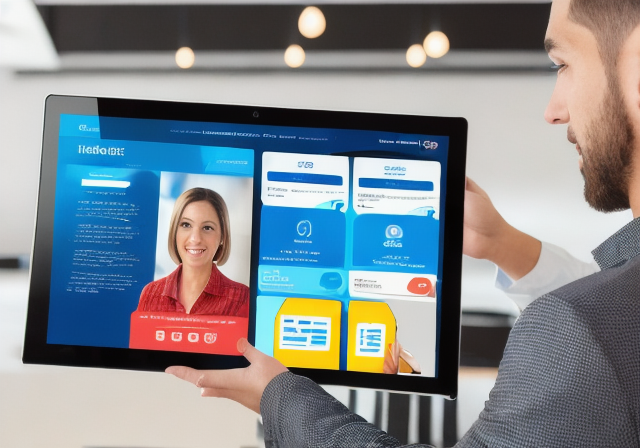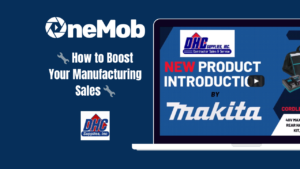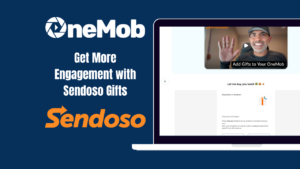Introduction
In today’s fast-paced and highly competitive business landscape, sales enablement has become a crucial component of any successful sales strategy. But what exactly is sales enablement, and why is it so important?
Sales enablement refers to the process of providing sales teams with the resources, tools, and information they need to effectively engage with prospects, build relationships, and close deals. It involves aligning marketing and sales efforts to ensure that the right message is delivered to the right people at the right time, as well as equipping sales teams with the knowledge and skills they need to effectively communicate that message.
The importance of sales enablement cannot be overstated. According to a recent study by CSO Insights, companies with a well-established sales enablement program see a 15.3% increase in win rates compared to those without. Additionally, sales enablement can help shorten sales cycles, improve the quality of leads, and increase revenue and profitability.
So how can sales enablement tools help your team?
Streamline Sales Processes
One of the biggest benefits of sales enablement tools is that they can help streamline sales processes, making it easier for sales reps to find the information they need, when they need it. By providing a centralized platform for storing and accessing sales collateral, such as presentations, case studies, and product information, sales enablement tools can save reps valuable time and effort, allowing them to focus on selling rather than searching for information.
Improve Collaboration
Sales enablement tools can also help improve collaboration between sales and marketing teams. By providing a common platform for sharing information, sales enablement tools can help ensure that everyone is on the same page and working towards the same goals. This can help prevent miscommunications and misunderstandings, as well as improve the overall effectiveness of both teams.
Personalize the Customer Experience
Another key benefit of sales enablement tools is that they can help sales teams personalize the customer experience. By providing insights into customer behavior and preferences, sales enablement tools can help reps tailor their approach to each individual customer, improving their chances of success. Additionally, sales enablement tools can help reps track customer interactions and engagement, allowing them to identify areas where they can improve and optimize their sales strategies.
If you’re looking to give your sales team a competitive edge, implementing a sales enablement program and leveraging sales enablement tools is a great place to start.

High-Level Overview of Sales Enablement Tools
Sales enablement tools are a set of technology-based resources designed to help sales teams streamline their workflows, automate repetitive tasks, and enhance their overall productivity. These tools are aimed at providing sales reps with the right content, training, and tools they need to close more deals and achieve their sales targets.
What are Sales Enablement Tools?
At their core, sales enablement tools are designed to help sales teams work smarter, not harder. They provide valuable insights into customer behavior and preferences, enable the creation of personalized experiences, and help sales reps deliver the right message at the right time.
Why do you need them?
Without sales enablement tools, sales reps are often left to their own devices, relying on outdated processes and struggling to keep up with ever-changing customer expectations. By leveraging the power of sales enablement tools, however, sales teams can stay ahead of the curve, improve their performance, and close more deals.
What are the benefits of using sales enablement tools?
The benefits of using sales enablement tools are many. For one, they can help reduce sales cycle times by automating repetitive tasks and identifying high-value leads. They can also help improve customer experiences by providing personalized content, insights, and recommendations. Additionally, they can help sales reps stay up-to-date on the latest trends, best practices, and industry news, enabling them to become more effective sales professionals.
What are the different types of sales enablement tools?
There are many different types of sales enablement tools available today, each catering to a specific need or use case. Some of the most popular types include:
- Content Management Systems (CMS): CMS tools help sales teams create, manage, and distribute content to customers
- Customer Relationship Management (CRM) Systems: CRM tools help sales teams manage customer data, interactions, and deals
- Learning Management Systems (LMS): LMS tools help sales teams develop and deliver training content to improve sales skills and knowledge
- Analytics and Reporting Tools: Analytics tools help sales teams track and analyze customer behavior, sales performance, and other key metrics
By leveraging these and other sales enablement tools, sales teams can achieve greater efficiency, productivity, and success than ever before.

Stay tuned for our next section, where we’ll dive deeper into the world of content management systems and explore how they can help sales teams create, manage, and distribute content more efficiently.
Niche Topics in Sales Enablement Tools
While sales enablement tools are already a powerful asset for any sales team, there are still many ways to optimize their usage and make them even more effective. Here are some niche topics in sales enablement tools that are worth exploring:
Using AI and Machine Learning in Sales Enablement
Artificial intelligence (AI) and machine learning have revolutionized the way sales teams approach their work. With these technologies, sales enablement tools can now provide personalized recommendations, automate tedious tasks, and analyze data more effectively. For example, some tools can use machine learning to score leads based on their likelihood to convert, while others can provide personalized content recommendations for each stage of the sales funnel.

AI and machine learning can also help sales teams identify patterns and trends in their data that they might have missed otherwise. By analyzing large amounts of data, these technologies can provide insights into which sales tactics are working and which ones aren’t, as well as identify potential areas for improvement. This can help sales teams refine their strategies and improve their overall performance.
Sales Enablement Tools for Remote Teams
With the rise of remote work, sales teams need sales enablement tools that can support their needs even when they’re not in the same physical location. Fortunately, many sales enablement tools have adapted to this new reality by offering features like virtual meeting capabilities, file sharing, and collaboration tools.

One of the benefits of remote sales enablement tools is that they allow sales teams to be more flexible and agile. With virtual meeting capabilities, salespeople can connect with prospects no matter where they are in the world. And with file sharing and collaboration tools, teams can work together on proposals, presentations, and other materials in real-time, even if they’re not in the same room.
The Role of Analytics in Sales Enablement
Analytics are a key component of any successful sales enablement strategy. By tracking metrics like engagement rates, conversion rates, and deal size, sales teams can gain insights into how their customers are interacting with their content and identify areas for improvement.

One of the benefits of using analytics in sales enablement is that it allows sales teams to make data-driven decisions. Rather than relying on gut instincts or anecdotal evidence, teams can use real data to make informed decisions about their sales strategies. This can lead to better results, as teams can optimize their tactics based on what’s actually working.
Customizing Sales Enablement Tools for Your Team’s Needs
No two sales teams are exactly alike, which is why it’s important to customize sales enablement tools to fit your team’s specific needs. Whether it’s adding new features, integrating with other tools, or tailoring content to a specific audience, customization is key to maximizing the effectiveness of your sales enablement tools.

Customization can help sales teams streamline their workflows, improve collaboration, and ultimately close more deals. By tailoring their sales enablement tools to fit their unique needs, teams can work more efficiently and effectively, while also providing a better experience for their customers.
Lesser-Known Details About Sales Enablement Tools
Sales enablement tools have become an essential part of the modern sales process. They provide sales teams with the necessary resources to close more deals and increase revenue. However, there are still lesser-known details about these tools that are worth exploring. In this section, we’ll dive into some of these details, including the importance of integrations, measuring success, common mistakes to avoid, and the future of sales enablement tools.
The Importance of Integrations with Other Tools
One of the most significant advantages of sales enablement tools is their ability to integrate with other software and tools. Integrations can help streamline the sales process, automate tasks, and provide valuable insights into customer behavior. For example, integrating your sales enablement tool with your CRM system can give you a better understanding of your customer’s needs and preferences. Additionally, integrating with marketing automation tools can help you create personalized content that resonates with your prospects.
It’s important to note that not all integrations are created equal. When evaluating sales enablement tools, make sure to ask about their integration capabilities. Look for tools that offer open APIs and pre-built integrations with popular software and tools. This will make it easier to connect your sales enablement tool with your existing tech stack.
Measuring the Success of Your Sales Enablement Tools
Measuring the success of your sales enablement tools is critical to understanding their impact on your bottom line. However, many sales teams struggle to track and measure the ROI of their sales enablement initiatives. To accurately measure success, you need to establish clear goals and metrics upfront. This could include metrics such as win rates, deal velocity, or revenue growth.
Another critical factor in measuring success is data quality. Sales enablement tools rely on accurate and up-to-date data to provide valuable insights. Make sure you have a system in place to ensure data quality, such as regular data hygiene checks or data governance policies.
Common Mistakes to Avoid When Implementing Sales Enablement Tools
Implementing sales enablement tools can be challenging, and there are several common mistakes that sales teams should avoid. One common pitfall is failing to align your sales enablement strategy with your broader business goals. Your sales enablement tool should support your overall sales strategy and help you achieve your business objectives.
Another common mistake is choosing a sales enablement tool that is too complex or difficult to use. Sales teams need tools that are intuitive and easy to use, so they can focus on selling, not learning new software. Make sure to evaluate the user-friendliness of any sales enablement tool you’re considering.
The Future of Sales Enablement Tools
The future of sales enablement tools is an exciting space to watch. As technology continues to evolve, we can expect to see more advanced AI and machine learning capabilities added to these tools. This will help sales teams automate more tasks, personalize content at scale, and gain deeper insights into buyer behavior.
Additionally, we can expect to see more sales enablement tools designed specifically for remote teams. As remote work becomes more prevalent, sales teams will need tools that support collaboration, communication, and remote selling.
The sales enablement space is poised for growth and innovation. By staying up-to-date with the latest trends and tools, sales teams can stay ahead of the competition and close more deals.

Overall, sales enablement tools offer tremendous value to sales teams. By leveraging integrations, measuring success, avoiding common mistakes, and staying ahead of the curve, sales teams can maximize the impact of these tools and drive more revenue.







